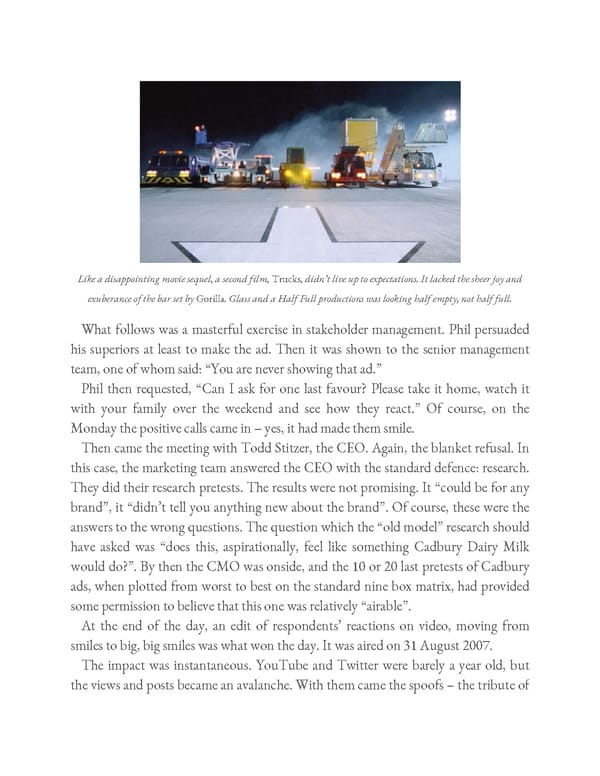Like a disappointing movie sequel, a second film, Trucks, didn’t live up to expectations. It lacked the sheer joy and exuberance of the bar set by Gorilla. Glass and a Half Full productions was looking half empty, not half full. What follows was a masterful exercise in stakeholder management. Phil persuaded his superiors at least to make the ad. Then it was shown to the senior management team, one of whom said: “You are never showing that ad.” Phil then requested, “Can I ask for one last favour? Please take it home, watch it with your family over the weekend and see how they react.” Of course, on the Monday the positive calls came in – yes, it had made them smile. Then came the meeting with Todd Stitzer, the CEO. Again, the blanket refusal. In this case, the marketing team answered the CEO with the standard defence: research. They did their research pretests. The results were not promising. It “could be for any brand”, it “didn’t tell you anything new about the brand”. Of course, these were the answers to the wrong questions. The question which the “old model” research should have asked was “does this, aspirationally, feel like something Cadbury Dairy Milk would do?”. By then the CMO was onside, and the 10 or 20 last pretests of Cadbury ads, when plotted from worst to best on the standard nine box matrix, had provided some permission to believe that this one was relatively “airable”. At the end of the day, an edit of respondents’ reactions on video, moving from smiles to big, big smiles was what won the day. It was aired on 31 August 2007. The impact was instantaneous. YouTube and Twitter were barely a year old, but the views and posts became an avalanche. With them came the spoofs – the tribute of
 Ogilvy on Advertising in the Digital Age Page 170 Page 172
Ogilvy on Advertising in the Digital Age Page 170 Page 172